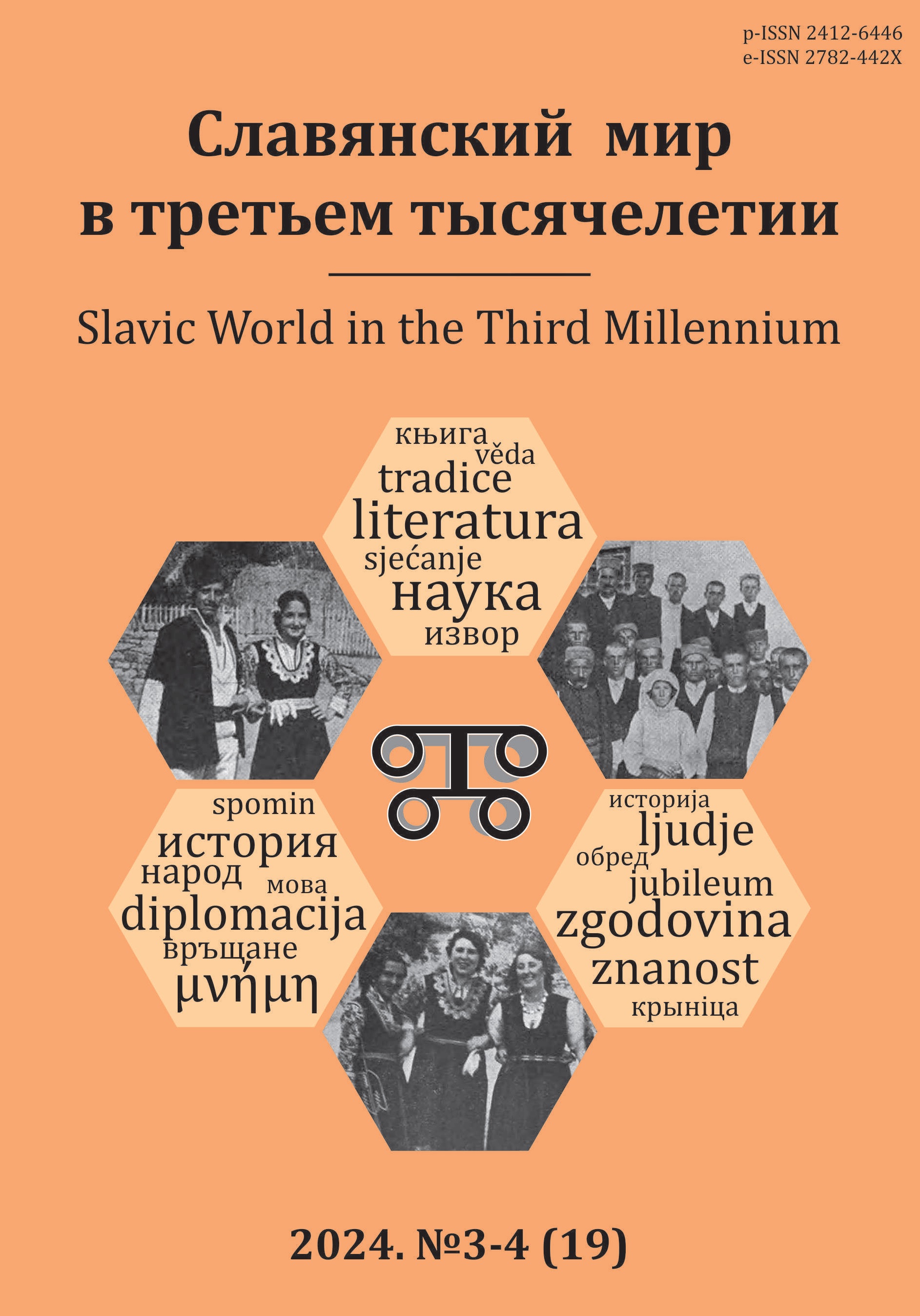The Re-emigration of Old Believers from Dobrudja: “Bulgarian” stage 1946 (Based on Archival data)
DOI:
https://doi.org/10.31168/2412-6446.2024.19.3-4.05Keywords:
Bulgaria, USSR, Old Believers, re-emigration, ethno-confessionality, diaspora, Lipovans, Nekrasovites, Russian Old Believers in Bulgaria, Russian Old Believers in Romania, Dobrudja, Ukrainian SSRAbstract
The article is based on published and archival sources reconstructs a little-known story of the repatriation of Russian Old Believers from Bulgaria to the USSR in 1946. The basic documentary evidence was the family lists of migrants compiled during the resettlement. Their heuristic potential allows the author to consider the process of repatriation at the level of households, groups and villages. In general, the Bulgarian group of the Russian diaspora population of Europe is relatively small. It was formed long before the emergence of the contemporary national state. In an effort to save their religious identity, the Lipovans and Nekrasovites during the 18th – first half of the 19th centuries populated some Ottoman territories (the Balkans and Anatolia). At this time, a dozen settlements were formed in Dobrudja, including Tataritsa near Silistra. At the level of communities and individual families there was almost permanent mobility that led to large-scale redistribution of human resources between different regions of the Ottoman Porte and adjacent areas. For example, at the beginning of the 20th century, the village of Kazashko appeared near Varna. When the Red Army entered Bulgaria (1944–1945), the idea of the return of Old Believers to their historical homeland arose among its officers. In 1946 with the help of the Soviet Union about half members of the ethno-confessional group from Bulgaria re-emigrated to the Ukrainian SSR. Despite the attention to such an original group of the “Russian Diaspora” and to the topic of “re-emigration”, the circumstances, process and result of this resettlement is still without proper documentary presentation. This story should be considered in the general context of the repatriation of Russian Old Believers from Dobrudja (similar resettlements from Romania were carried out in 1945 and 1947).
Funding
The study was supported by a grant from the Russian Science Foundation № 24-28-01663, https://rscf.ru/project/24-28-01663/, project “«Domestication of the Soviet»: the Experience of Repatriation of Old Believers from Europe and Adaptation to the USSR”.
Received 11 September 2024
Revised 25 November 2024
Accepted 10 December 2024
For citation: Prigarin, A. A., 2024. The Re-emigration of Old Believers from Dobrudja: “Bulgarian” stage 1946 (Based on Archival data). Slavic World in the Third Millennium, 19 (3–4), pp. 96–118. https://doi.org/10.31168/2412-6446.2024.19.3-4.05



